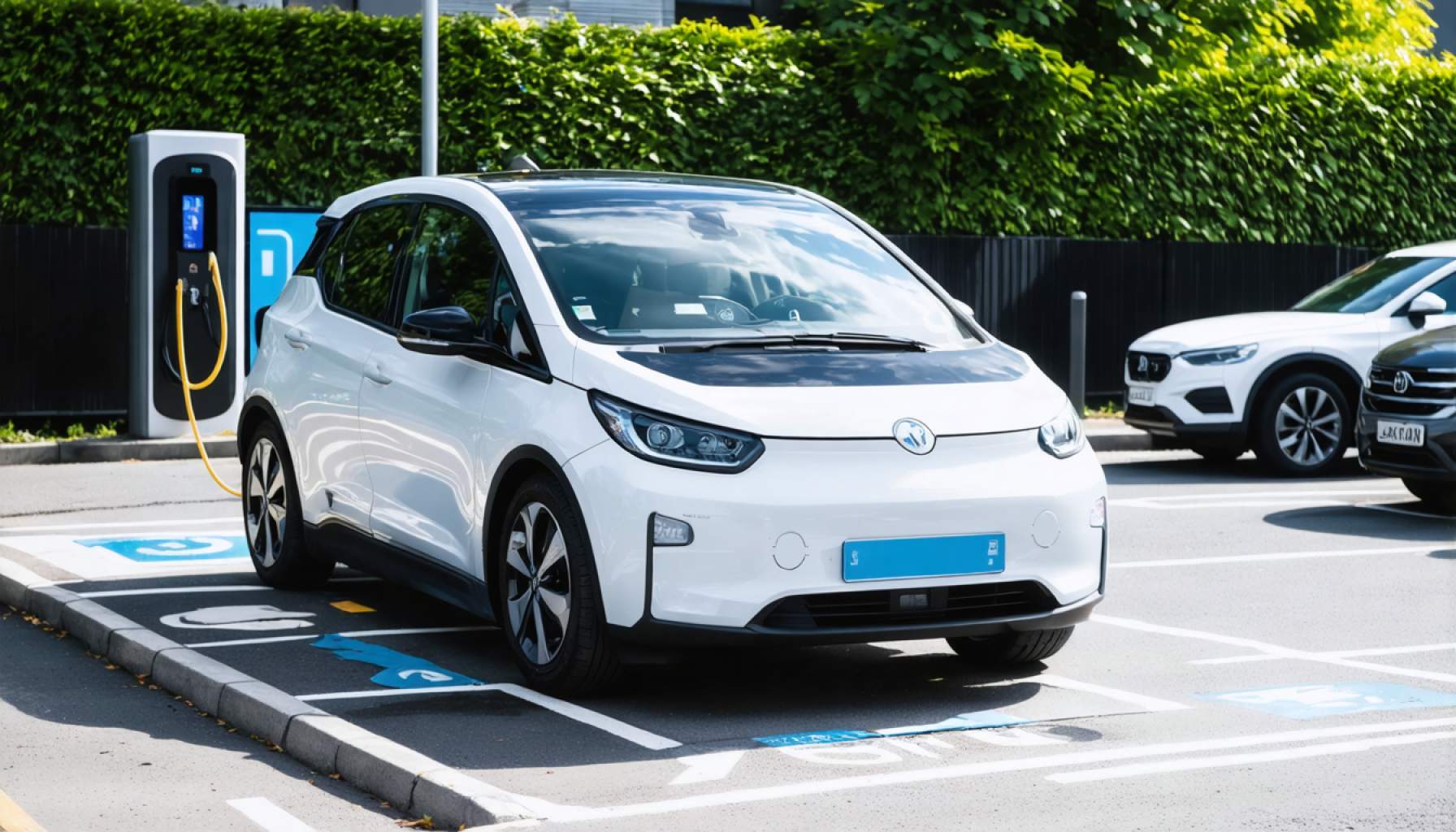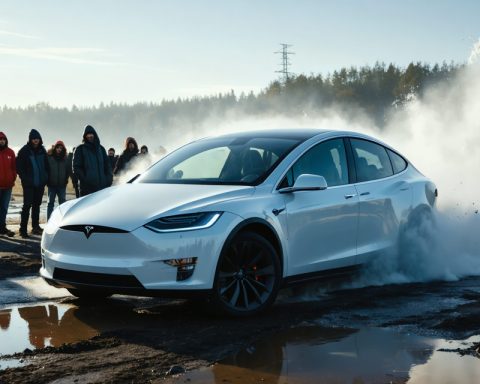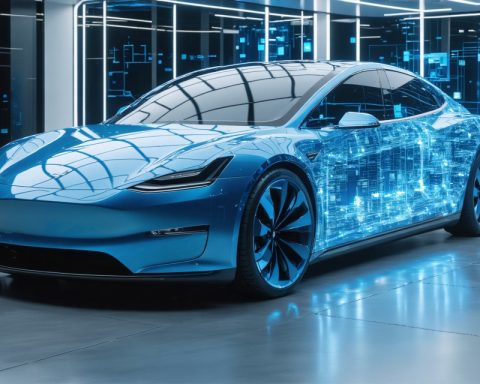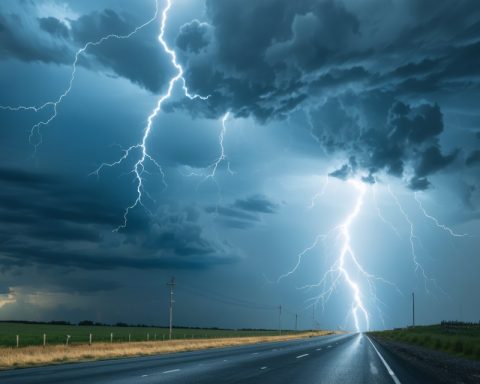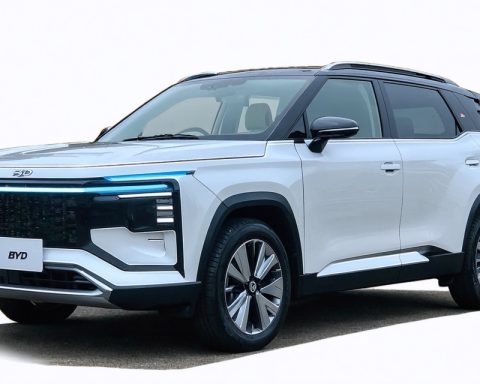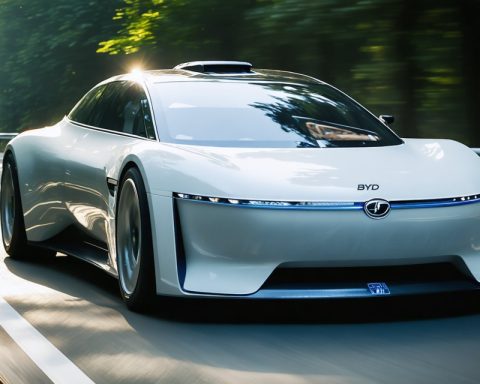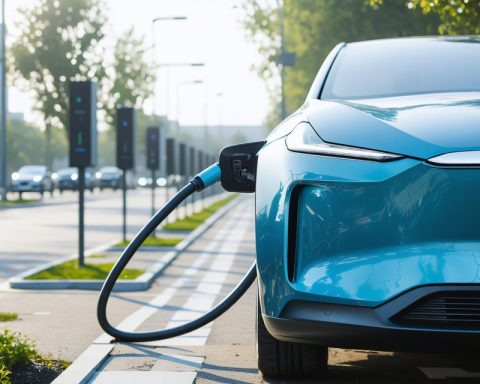- Terra Charge and IHI Fuso Engineering are collaborating to integrate EV charging stations within mechanical parking structures in Tokyo, addressing a critical challenge for urban areas.
- The initiative aims to make EV charging more accessible to residents in multi-unit dwellings, where 82.3% report inadequate charging facilities.
- The partnership supports Japan’s goal to install 300,000 EV charging stations by 2030, a significant increase from the current 30,000.
- Ingenious design solutions allow broader parking pallets to accommodate charging units without hindering vehicle movement, improving EV infrastructure.
- The project enhances urban EV adoption by simplifying charging access through user-friendly apps and robust infrastructure.
- This collaboration represents a commitment to sustainability, technology advancement, and meeting consumer needs in urban environments.
In the bustling heart of Tokyo, a technological alliance is transforming the landscape of urban parking and electric vehicle (EV) charging. Terra Charge, a pioneering player in EV charging solutions, has joined forces with IHI Fuso Engineering to tackle a critical challenge in the EV revolution: the integration of charging stations within mechanical parking facilities. This collaboration unveils a promising solution for eco-conscious city dwellers facing the notorious difficulties of charging infrastructure.
Picture a typical apartment complex. Space is a premium, and parking is often limited to mechanical structures designed to maximize every inch. These mechanical wonders lift and lower cars into perfectly slotted spaces, but the tight confines and moving components have made fitting EV charging stations into such environments notoriously difficult. This is where Terra Charge and IHI step in, leveraging masterful engineering to grant electric vehicles a much-needed boost.
Why does this matter? As an alarming 82.3% of surveyed individuals living in multi-unit residences report a lack of charging facilities, the need for convenient home-based charging solutions is ever more pressing. The Japanese Ministry of Economy, Trade, and Industry eyes a goal: installing 300,000 EV charging stations by 2030. Yet, numbers reveal we are currently lagging with only about 30,000 installed. Bridging this gap requires innovation and strategic partnerships like those between Terra Charge and IHI Fuso.
Together, these companies are pioneering an installation approach that marries utility with design. By employing broader parking pallets that can accommodate charging units without obstructing vehicle movement, the solution lessens traditional constraints on vehicle dimensions and charging cable management. The outcome is a seamless, efficient fusion of parking and recharging, propelling us toward a sustainable automobile future.
At the core of this initiative is a mission shared by both Terra Charge and IHI Fuso: to empower urban residents to choose EVs without the looming concern of charging inconvenience. By enhancing accessibility, the hope is to accelerate EV adoption, lifting the barriers these sophisticated parking facilities once posed.
Visualize a future where your EV charges overnight just steps from your home, no longer a privilege but a norm thanks to Terra Charge’s intuitive charging apps and IHI’s robust infrastructure. Terra Charge’s app simplifies the process, turning charging into a user-friendly experience through a few taps on a smartphone. Users can effortlessly locate charging spots, monitor charging progress, and handle payments, backed by 24/7 support.
This partnership symbolizes a commitment not only to technological development but to environmental progress and consumer needs. As the gears of innovation turn, Terra Charge and IHI Fuso Engineering are not just adapting to change; they are heralding a new chapter in urban living, where electric vehicles are not only encouraged but seamlessly integrated into our daily lives.
With steps like these, the path to a greener, more efficient tomorrow seems not only possible but imminent. It’s more than just a charge; it’s powering a revolution.
Revolutionizing Urban EV Charging: How Terra Charge and IHI Fuso Engineering Lead the Charge
The innovative partnership between Terra Charge and IHI Fuso Engineering in Tokyo is set to transform the landscape of urban electric vehicle (EV) charging. As cities grow denser and the push for sustainability increases, the integration of EV charging stations within existing mechanical parking structures offers a promising solution for eco-conscious urban dwellers.
Market Trends and Predictions
The global push towards electrification is driving significant change in transportation. The demand for EVs is surging worldwide, with the International Energy Agency (IEA) projecting that global EV stock will reach 125 million by 2030. As a result, the infrastructure supporting these vehicles must evolve rapidly. The partnership between Terra Charge and IHI Fuso addresses this need by facilitating the seamless installation of EV chargers in tightly packed urban settings.
How Terra Charge and IHI Fuso are Innovating
1. Space Optimization: Traditional mechanical parking systems are space-efficient marvels, but integrating charging facilities has often posed challenges due to spatial constraints. Terra Charge and IHI Fuso Engineering have developed a method to incorporate charging stations without obstructing vehicle movement, using innovative parking pallets that accommodate both vehicles and charging units effectively.
2. User-Friendly Technology: Terra Charge’s application simplifies the charging experience, allowing users to find available charging stations, monitor charging progress, and manage payments—all through an intuitive smartphone interface.
Real-World Use Cases
– Apartment Complexes: As more people opt for EVs, the convenience of charging at home becomes crucial. Terra Charge’s solutions make it feasible for residents of apartment complexes with mechanical parking to enjoy hassle-free overnight charging.
– Commercial Properties: Businesses can integrate these systems to offer charging options for customers and employees, supporting corporate sustainability goals and potentially increasing customer foot traffic.
Challenges and Limitations
While the partnership is promising, challenges remain:
– Upfront Costs: Installing charging infrastructure can be costly. Government incentives or subsidies might be necessary to make widespread implementation economically viable.
– Technical Integration: Adapting existing mechanical parking systems to include charging capabilities requires significant technical expertise and redesign.
Security and Sustainability
The initiative goes hand in hand with robust security measures to prevent unauthorized access to charging stations. Sustainability is at the forefront, with both companies committed to reducing carbon emissions and environmental impact through their technologies.
Quick Tips for Urban EV Owners
– Check if your building management is aware of innovative solutions like Terra Charge for future-proofing your parking needs.
– Consider the long-term savings and environmental benefits of installing or lobbying for EV charging capabilities in your residence.
– Use apps like Terra Charge to manage charging sessions efficiently and track energy usage.
Conclusion
As urban centers continue to thrive, the need for sustainable and efficient mobility solutions will only grow. The collaboration between Terra Charge and IHI Fuso Engineering is a pioneering step towards reimagining urban infrastructure. By addressing the barriers to EV adoption in dense cities, they are paving the way for an era where powering your vehicle is as simple as parking it.
For more insights and developments in urban mobility and innovative solutions in EV charging, visit [Terra Charge](https://www.terra-charge.com) and [IHI Corporation](https://www.ihi.co.jp) for more innovations in engineering.
